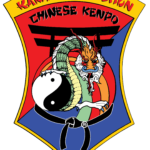Enshin Itto Ryu Battojutsu (EIRB)
StudytheSword.com / SalinasEIRB.com
We offer training in Japanese swordsmanship in an amazing art called Enshin Itto Ryu Battojutsu. Literally translated, this means “center of a circle single sword school”.
We are an Affiliate Dojo of the International Enshin Itto Ryu Battojutsu Association based in Nagoya, Japan under the Directorship of Julio Toribio – Daijo Shihan, Judan, Menkyo Kaiden Okuden.
Dojo-Cho Steve Zalazowski, Sr. is a jikideshi (direct disciple) of Julio Toribio – Daijo Shihan.
- FAQ: What is required to Study the Sword ?
- As this is a traditional Japanese sword art, there are some uniform requirements which can be sourced through our school:
- Iaido style gi top
- black gi pants
- black hakama
- Training Equipment:
- A bokken (wooden training sword) with saya (scabbard)
- At the brown belt level, the student should plan on purchasing an Iaito (unsharpened training sword)
- At the Yondan (4th degree black belt) level, a Shinken (live blade sword) is required for tameshigiri (practicing cutting techniques on various objects)
- As this is a traditional Japanese sword art, there are some uniform requirements which can be sourced through our school:
- FAQ: How does the ranking system work?
- The ranking system is a combination of the Menkyo and KyuDan systems. The basic overview is as follows:
- White Belt (Sankyu)
- All students without prior black belt level experience in martial arts begin as a white belt.
- Green Belt (Nikyu)
- Students who hold a black belt level in another martial art who are NOT qualified as an instructor in that art may be permitted to begin at the Nikyu level.
- Brown Belt (Ikkyu)
- Students who hold a black belt level AND are qualified as an instructor in that art may be permitted to begin at the Ikkyu level.
- 1st Degree Black Belt (Shodan)
- 2nd Degree Black Belt (Nidan)
- 3rd Degree Black Belt (Sandan)
- 4th Degree Black Belt (Yondan)
- Registered IEIRBA Instructors who graduate the Yondan level and who are DojoCho are granted the recognition as a Shihan of this art.
- 5th Degree Black Belt (Godan)
- Students who graduate the Godan level are granted the recognition as a Shihan of this art.
- 6th Degree Black Belt (Rokudan)
- 7th Degree Black Belt (Nanadan)
- 8th Degree Black Belt (Hachidan)
- 9th Degree Black Belt (Kudan)
- 10th Degree Black Belt (Judan)
- White Belt (Sankyu)
- The ranking system is a combination of the Menkyo and KyuDan systems. The basic overview is as follows:
- FAQ: What should I expect in training?
- Training sessions consist of:
- Formal Opening
- Warmup consisting of basic movement drills
- Review of material selected from the current student levels
- Kata (forms)
- Kumitachi (2 person partner drills)
- Specific movement feedback instruction
- Formal Closing
- Training sessions consist of:
- I have a question – but I’m afraid to ask it…
- We see this phenomena all the time.
- FAQ – Frequently Asked Questions – If you’ve got a question – it’s likely someone else does too – so ASK!
- When students ask questions – they learn more effectively. There is really only one question we do not like to hear:
- “Why?” This question is ineffective – anyone can ask why. A 5 year old asks “why” because they cannot form a more effective question. We simply request our students think about what they want to ask and do their best to ask effective questions. The one word “why” usually means the student has not seriously thought about the subject before they ask.
- FAQ: What benefits are found learning the sword in the modern world?
- Steve‘s answer: “This is one of the most important questions I am asked frequently – I guess that’s why we call them FAQ – Frequently Asked Questions. Nobody carries a sword around the street in the modern world. Well – at least not without having people and likely law enforcement asking interesting questions anyway. I studied several martial arts for twenty years until I was called to study the sword through a seminar put on by my teacher that made me realize I had never experienced the minute details that you will learn about how your body moves swinging a blade.
Little differences in balance, the subtle changes in weight distribution, how the intention you create in your mind and implement in your body manifests itself in different ways. It (studying the sword) has literally redefined – again – how I perceive movement and how I create the structure and deliver power in my open hand methodologies.
Anyone studying a Japanese lineage who does not include the sword as part of their study is missing out. Anyone who trains in any other martial art will definitely find benefit in adding the Study of the Sword to their repertoire. And finally, anyone who likes to learn new things – the sword will teach you things about your body and how you move you won’t see coming until the revelations dawn on you.”
- Steve‘s answer: “This is one of the most important questions I am asked frequently – I guess that’s why we call them FAQ – Frequently Asked Questions. Nobody carries a sword around the street in the modern world. Well – at least not without having people and likely law enforcement asking interesting questions anyway. I studied several martial arts for twenty years until I was called to study the sword through a seminar put on by my teacher that made me realize I had never experienced the minute details that you will learn about how your body moves swinging a blade.
- FAQ: Will my training be recognized by other sword schools?
- The International Enshin Itto Ryu Battojutsu Association presently has several member dojos around the world, and your rank and training are recognized amongst our association. If you choose to study a different lineage of sword training, you may or may not have your rank acknowledged as the curriculum will undoubtably be different, but the movements will be familiar to you and your progress will likely be accelerated.
- FAQ: How do I become an Instructor?
- A great Instructor is first and foremost a FANTASTIC student. You need to learn under someone who truly can help you grow and develop both as a sword practitioner but who can also guide your development in the art of teaching others effectively.
- There are black belts all over the world in every style imaginable who frankly are not qualified to teach others. A black belt is simply the recognition by your instructor that you have completed a set of curriculum. That is NOT equal to the ability, knowledge, or talent required to effectively train others.





